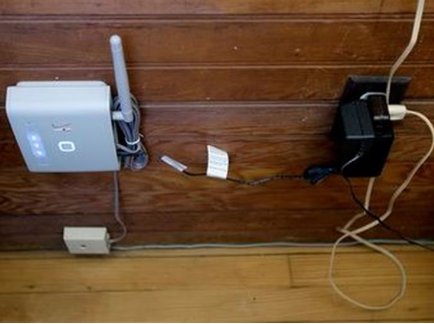Copper Phone Lines: The Legacy and Evolution of Traditional Telephony
Introduction
In the realm of telecommunications, copper phone lines have long been the backbone of traditional landline communication. Although modern technologies like fiber optics and wireless networks have gained prominence, copper lines remain a significant part of the global telephony infrastructure. In this blog post, we will explore the history, characteristics, advantages, and limitations of copper phone lines. We will also delve into their role in modern telecommunications and the ongoing transition to newer technologies.

- The Legacy of Copper Phone Lines
Copper phone lines have a rich history that dates back to the invention of the telephone by Alexander Graham Bell. In the early days, copper wires were used to carry analog voice signals, revolutionizing long-distance communication. The installation of copper lines expanded rapidly, connecting communities and facilitating global connectivity.
- Characteristics of Copper Phone Lines
Copper phone lines are made of copper wires that transmit voice signals in the form of analog electrical currents. These lines are typically twisted pairs of insulated copper wires, which help reduce electromagnetic interference. The thickness and quality of the copper wire can affect the clarity and strength of the transmitted signals.
Copper lines are known for their reliability and durability. They can withstand harsh environmental conditions, making them suitable for outdoor installations. Copper is also a good conductor of electricity, enabling efficient signal transmission over long distances.
- Advantages of Copper Phone Lines
Copper phone lines offer several advantages that have contributed to their longevity and continued use:
a. Ubiquity and Coverage: Copper lines have been extensively deployed, providing widespread coverage in both urban and rural areas. They have reached remote regions where alternative technologies may be less accessible.
b. Compatibility: Copper lines are compatible with traditional telephony equipment, such as landline phones, fax machines, and modems. This compatibility allows for seamless integration with existing infrastructure and devices.
c. Power Supply: Copper lines can carry not only voice signals but also a small amount of electrical power. This feature enables traditional landline phones to function even during power outages, as they draw power from the telephone exchange.
d. Security: Copper lines are less susceptible to cyber-attacks compared to wireless networks. They offer a more secure means of communication, protecting sensitive information from potential breaches.
- Limitations and Challenges
Despite their advantages, copper phone lines suffer from certain limitations and face challenges in the modern telecommunications landscape:
a. Limited Bandwidth: Copper lines have a limited capacity to transmit data compared to newer technologies like fiber optics. They are primarily designed for voice communication and struggle to support high-speed internet services.
b. Signal Degradation: Copper lines are susceptible to signal degradation over long distances. As the signal travels, it can weaken, resulting in reduced call quality and slower data transfer rates.
c. Maintenance and Upkeep: Copper infrastructure requires regular maintenance and periodic testing to ensure optimal performance. Aging copper lines may develop faults or be vulnerable to weather-related damage.
d. Transition to Fiber Optics: Telecommunication providers are gradually phasing out copper lines in favor of fiber optics. Fiber offers significantly higher bandwidth, faster speeds, and better signal quality. However, the transition to fiber can be costly and time-consuming due to the need for infrastructure upgrades.
- The Future of Copper Phone Lines
As telecommunication networks evolve, the future of copper phone lines is uncertain. While their use continues to decline, they still serve as a vital means of communication in certain areas. Many telecom companies are exploring hybrid solutions, where fiber optics are used for the backbone network, while copper lines are retained for the last-mile connectivity to subscribers.
Furthermore, advancements in digital subscriber line (DSL) technology, such as Very-high-bit-rate Digital Subscriber Line (VDSL) and G.fast, have allowed for faster data transmission rates over copper lines. These technologies make it possible to provide higher-speed internet services and compete with alternative broadband options.
Conclusion
Copper phone lines have played a significant role in the development and expansion of traditional telephony, connecting people across the globe for over a century. While facing challenges from newer technologies, copper lines still offer widespread coverage, compatibility with legacy devices, and a level of reliability that is valued in certain scenarios. As telecommunications continue to evolve, the industry is gradually transitioning to fiber optics and wireless networks that offer greater bandwidth and faster speeds. However, the legacy of copper phone lines will endure, as they continue to serve as a reliable communication medium in areas where alternative options are limited or where the infrastructure transition is ongoing.
